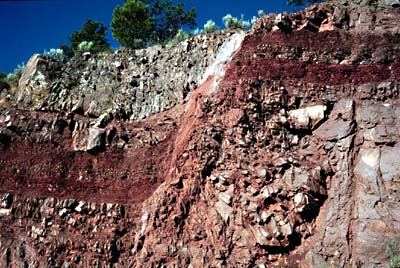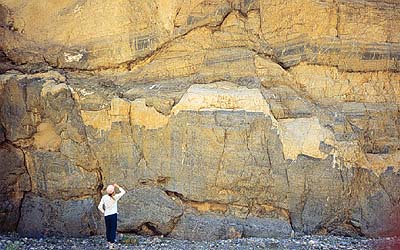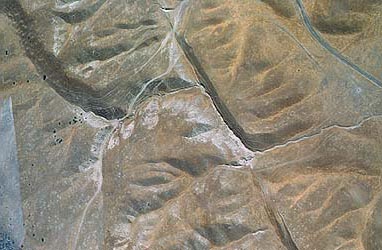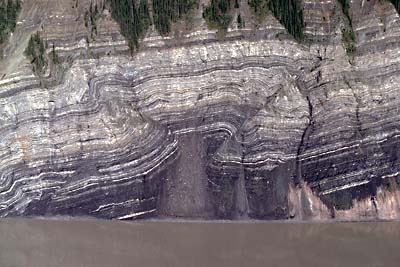Structure of Rock Bodies
(If you have any difficulty seeing any of the images you can download a pdf copy of the exercise here)
The problem:
An important bed of coal dips at an angle of 20 degrees to the ground surface,
which is horizontal. Where
the bed crops out at the surface, the coal has been mined out. You are considering the feasibility of
mining it underground. You
have acquired the necessary permits and permission to dig a vertical
mine shaft 2 km away
from the surface outcrop, and mine the coal (see figure).
1. How deep will you have to drill to reach the
top of the coal bed? Assume that the surface is horizontal and that the
dip
and strike of the coal bed are constant.
(Hint: Do you remember the basic trigonometric
functions (sine, cosine,
tangent) as they apply to triangles?
If not, go to http://www.mathsrevision.net/sin-cos-tan for
a refresher. A set of trig tables can be found here)
II. Uplift
and Erosion of Mountain Belts
1. Careful GPS surveys show that the crust below a certain mountain
belt at a convergent plate margin is rising at an average rate of 1.4 mm/year. Geologic studies suggest that the deformation and uplift have been
going on for about 10 million years. How much uplift (in km) would
be accomplished over this period of time?
2. Because of extensive erosion during uplift of the crust, deep rocks are eventually exposed at the surface to form a continental shield. Careful measurements of the rate of erosion in the mountain range suggest an erosion rate of about 0.7 mm/y. Estimate about how high the mountain belt would be after 10 million years of combined uplift and erosion.
III. Faults
Faults are important elements of the structure of rock bodies. Look at each of the six images below and determine if the faults shown are normal, reverse (thrust), or strike-slip. If strike-slip, then is it left-lateral or right-lateral?
Submit your answers to Blackboard by the due date announced in class.





